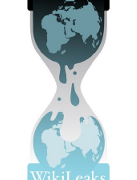M-PESA extends its reach
The following is a guest post by Billy Jack from Georgetown University’s Economics Department and Tavneet Suri from MIT’s Sloan School of Management.
 New data from the fourth round of a survey of Kenyan households confirm what every visitor to this East African nation knows: the spread of mobile technology and its adoption by broad swathes of the population continues. Probably the most successful of all the innovative mobile solutions is M-PESA, Safaricom’s mobile banking product that allows users to send money across the country (and recently, beyond) in an instant, as well as providing a safe and secure savings instrument, and a convenient bill payment capacity.
New data from the fourth round of a survey of Kenyan households confirm what every visitor to this East African nation knows: the spread of mobile technology and its adoption by broad swathes of the population continues. Probably the most successful of all the innovative mobile solutions is M-PESA, Safaricom’s mobile banking product that allows users to send money across the country (and recently, beyond) in an instant, as well as providing a safe and secure savings instrument, and a convenient bill payment capacity.
Launched in March 2007, M-PESA was originally going to be “banking for the unbanked” and “financial services for the poor.” While members of the economically marginalized population did adopt the service early on, the first rounds of our survey showed that up-take was nonetheless concentrated amongst those who were relatively better off. It was natural to ask whether M-PESA would show the same pattern of adoption as so many other promising technologies in the developing world – from hybrid seed to insecticide-treated bed nets, from seat belts to solar panels – with those at the bottom of the pyramid struggling to exploit the potential benefits.
Through technological efficiency, user-friendly design, marketing acumen, an explosion of cash-in/cash-out agents, regulatory largesse, and perhaps some luck, M-PESA is now used by 86 percent of households outside Nairobi. Of particular importance however is the changing pattern of utilization, as adoption spreads to the lower strata of the socio-economic ladder.
Our data, which is representative of most of Kenya outside the capital (where M-PESA is ubiquitous), shows a growing share of lower income households using M-PESA. For this population, median per capita consumption is low, a few cents less than $2 per day; and the bottom 25 percent of the population live on $1.10 per day or less. Our survey, which tracked the same households over a four-year period, found that in 2008, households with consumption above the median were nearly three times as likely to use M-PESA as those in the bottom quartile. In particular, half of those in the top half used M-PESA, while only 18% of those in the bottom quarter did so. Utilization among those in the second poorest quartile was intermediate, about a third (see Figure 1).

Figure 1: M-PESA use by daily per capita consumption
M-PESA has grown in all strata of the population, and while those at the top remain more likely to use the service, the gap between the top and bottom has narrowed substantially, partly due to the steady increase among the poor, and partly due to saturation among the better off. But concentrating on the gap between rich and poor is less informative than focusing on the simple fact that nearly three-quarters of the bottom quartile have adopted a service that five years ago did not exist. If anything, high rates of adoption by the better off have helped sustain the product, thereby facilitating access by the poor, as the pricing structure does not distinguish between services provided in cosmopolitan Nairobi and remote Turkana, or between remittances sent across the street or across the country.
Similarly, because of the correlation between income and bank access, M-PESA was initially used more by the banked population than the unbanked. Indeed, in 2008 just one-in-five of the unbanked population used M-PESA, but since then while the number of households with bank accounts has remained relatively stationary, the share of this unbanked population who use M-PESA has shot up to 75 percent (see Figure 2). Again, focusing on the divergence between the unbanked and the banked populations (fully 96% of the latter are now M-PESA users) is of limited utility: the fact that so many of the unbanked population have access to a modern electronic financial tool is what’s important.
Figure 2: M-PESA use by banked status

Figure 2: M-PESA use by banked status
Finally, very recently Safaricom has revised the M-PESA tariff schedule. Until now, the cost to the sender of sending money was a fixed 30 shillings (about 40 cents), plus the cost of withdrawing the money, if the recipient wished. This made small transfers of a few dollars relatively uneconomic, while apparently benefiting those who could send larger amounts. The fee structure has however been revised, with users able to send up to 50 shillings for a charge of just 3 shillings, and from 50 to 100 shillings for 5 (see http://www.safaricom.co.ke/index.php?id=255 for a complete listing). This reform could well expand the benefits accessible by those at the bottom of Kenya’s pyramid even further.







































